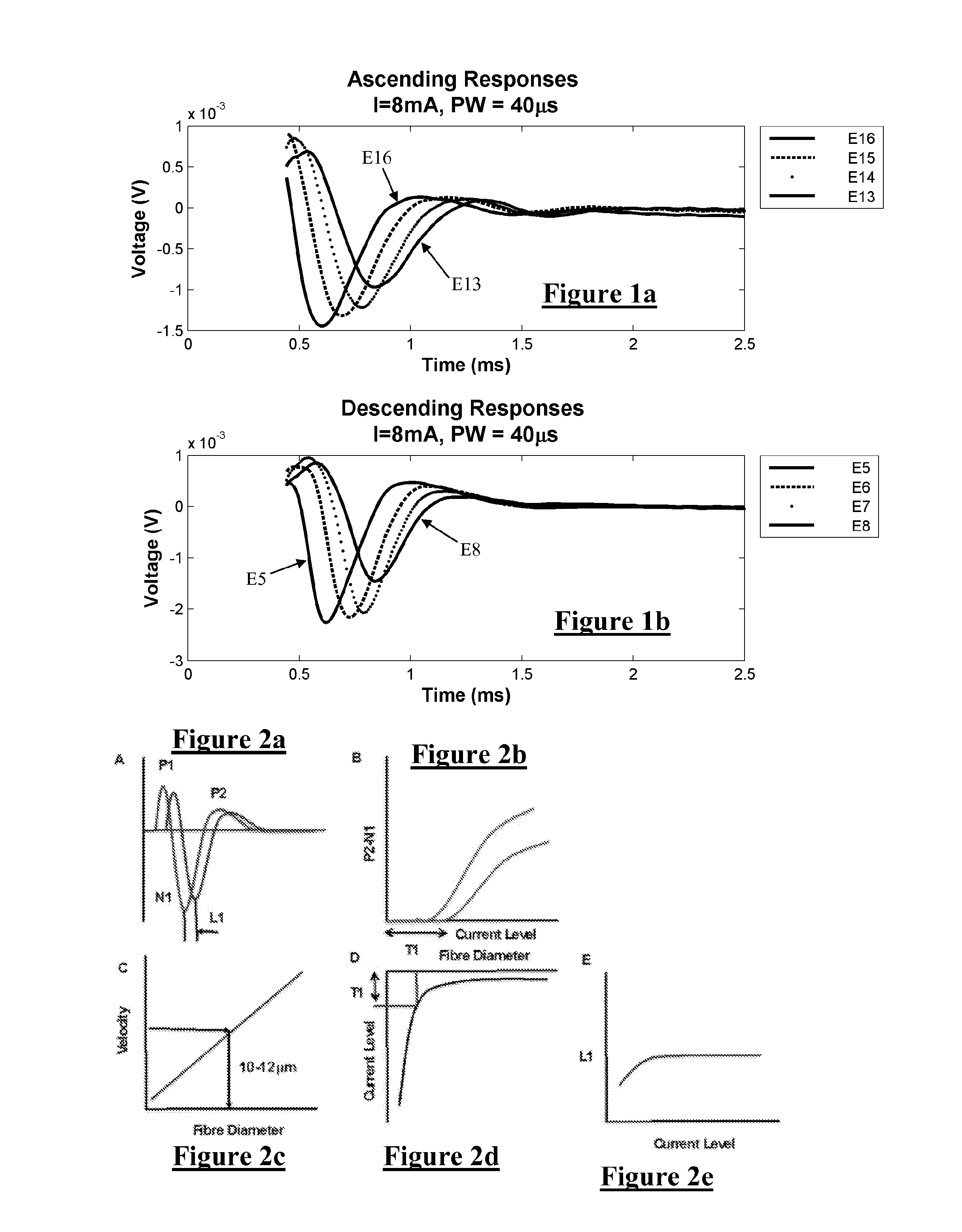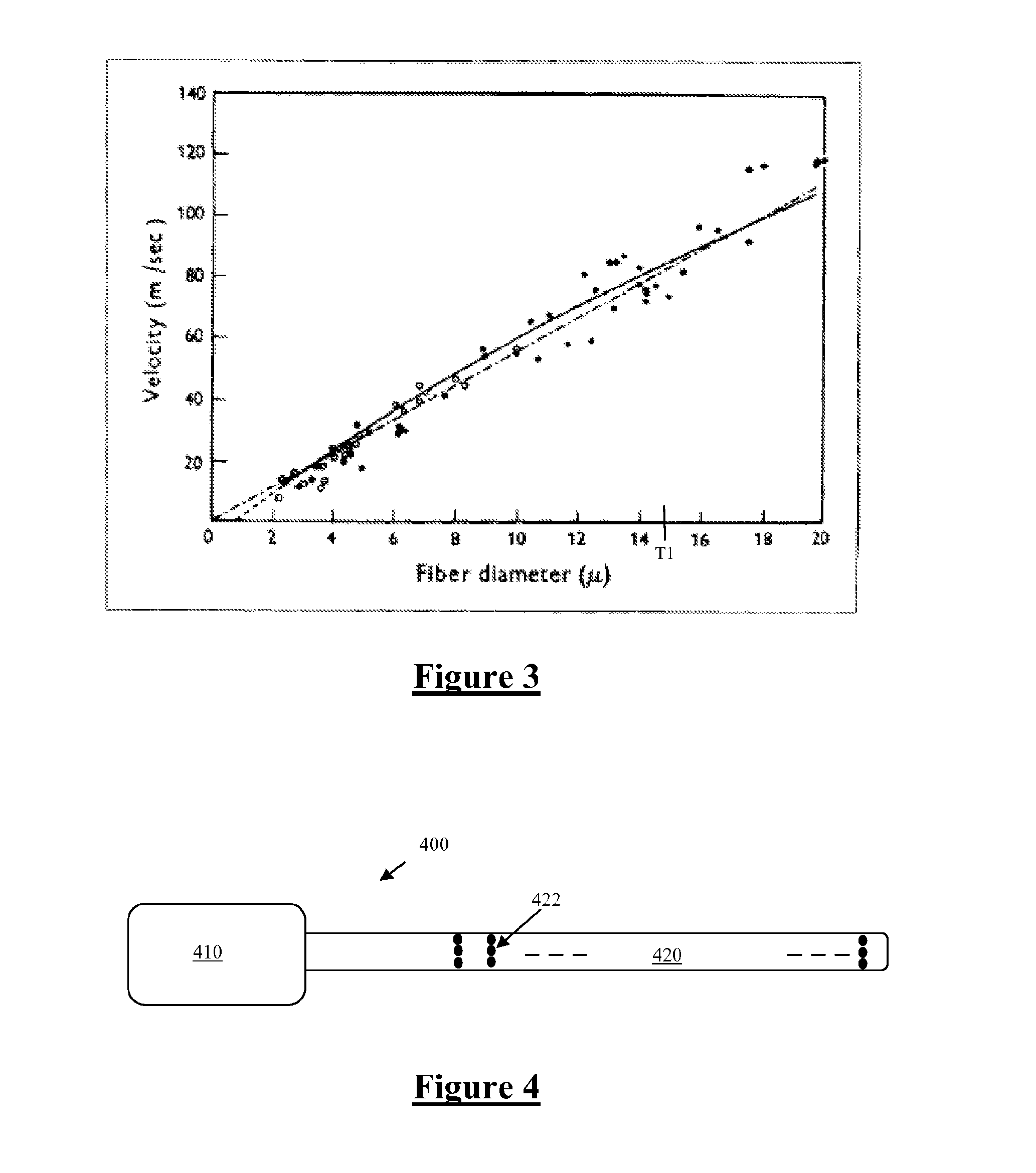Method and apparatus for measurement of neural response
a neural response and measurement method technology, applied in the field of neural response measurement, can solve the problems of difficult task, impracticality of implant system, and inability to precisely understand the mechanism involved, so as to slow and reduce the neural conduction velocity
- Summary
- Abstract
- Description
- Claims
- Application Information
AI Technical Summary
Benefits of technology
Problems solved by technology
Method used
Image
Examples
Embodiment Construction
[0044]FIG. 1 illustrates measured compound action potentials in the sheep spinal cord, both in the ascending / rostral direction (FIG. 1a) and descending / caudal direction (FIG. 1b). According to current theory the fibres responsible for inhibition of pain in therapeutic SCS are the Aβ fibres in the dorsal horn. Stimulation of these fibres produces an orthodromic (ascending) volley of discharges, and also an antidromic descending volley. In FIG. 1a, a single ascending compound action potential (CAP) is measured as it passes 4 measurement electrodes (E13 through E16) which are spaced apart along the neural pathway, increasingly distant from the stimulus. In FIG. 1b, a single descending CAP is measured as it passes 4 measurement electrodes (E5 through E8) which are spaced apart along the neural pathway, increasingly distant from the stimulus.
[0045]As can be seen in FIG. 1, in both the orthodromic and antidromic directions, the further away the measurement electrode is from the stimulus s...
PUM
 Login to View More
Login to View More Abstract
Description
Claims
Application Information
 Login to View More
Login to View More - R&D
- Intellectual Property
- Life Sciences
- Materials
- Tech Scout
- Unparalleled Data Quality
- Higher Quality Content
- 60% Fewer Hallucinations
Browse by: Latest US Patents, China's latest patents, Technical Efficacy Thesaurus, Application Domain, Technology Topic, Popular Technical Reports.
© 2025 PatSnap. All rights reserved.Legal|Privacy policy|Modern Slavery Act Transparency Statement|Sitemap|About US| Contact US: help@patsnap.com



